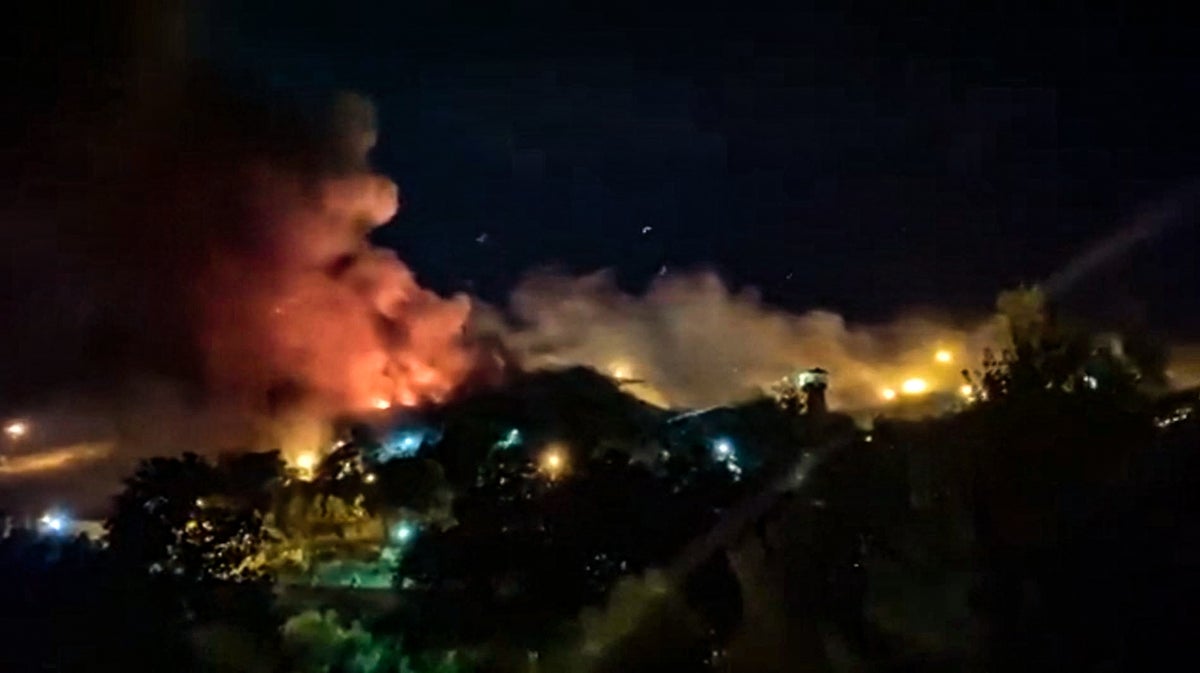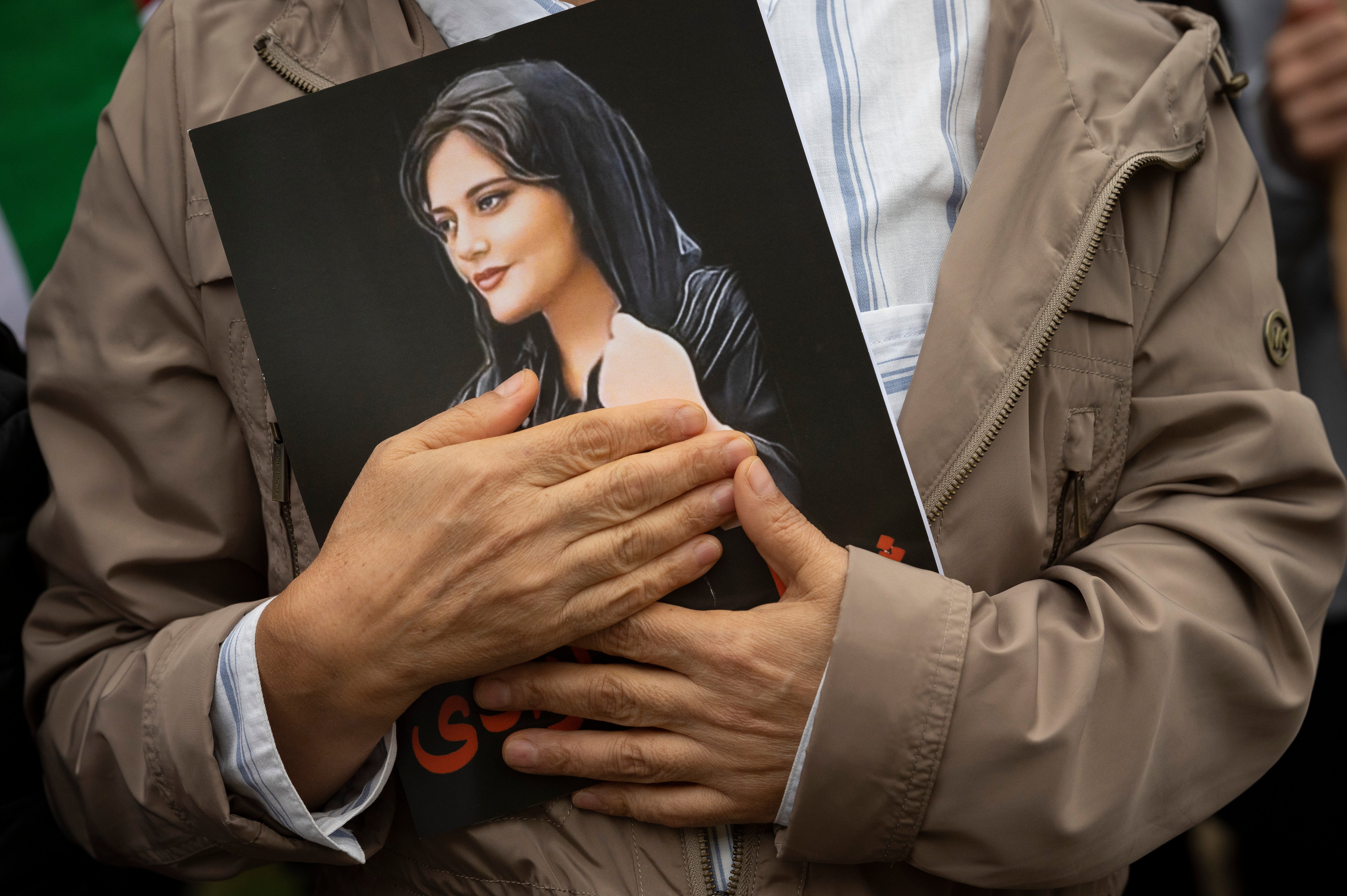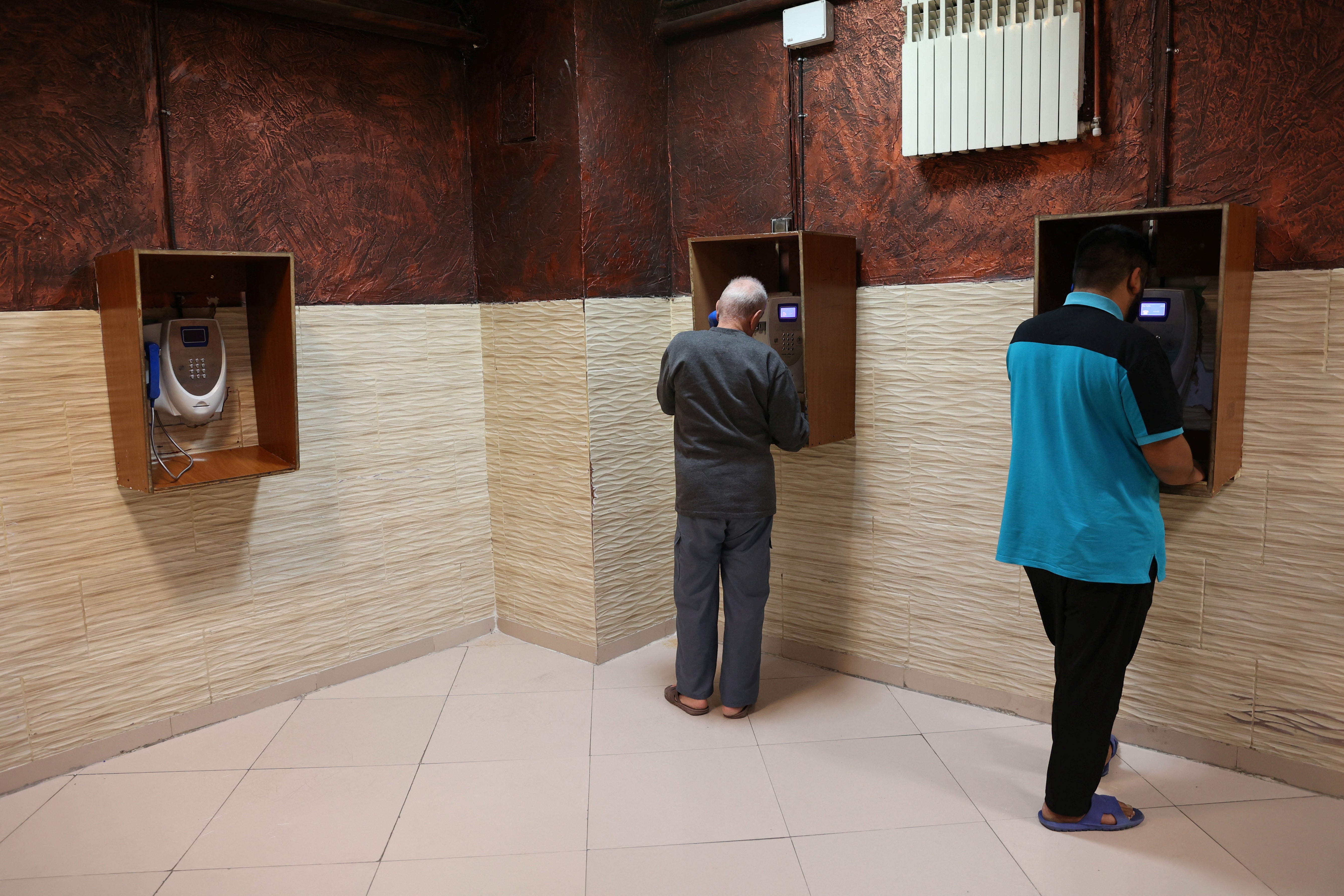
A ferocious fire that consumed parts of Tehran’s most infamous prison late Saturday has prompted concerns about the tens of thousands of detainees locked up inside Iran’s detention centres after weeks of protests.
Authorities say at least eight people were killed in the blaze and dozens more injured within the capital’s Evin prison complex, where political prisoners, dissident journalists and writers, as well as dual nationals detained on specious espionage charges are kept locked up.
Jafar Panahi, the award-winning filmmaker locked up at Evin, told his wife in a brief phone call Sunday morning that the melee was “the worst hours of his life”.
Sirens also went off Monday at the massive Ghezel Hesar prison in the city of Karaj, the country’s largest detention facility. And at least 12 people were killed in a melee in Lakan prison near the northern city of Rasht on 9 October, according to Hrana, a network of Iranian human rights activists. An Iranian with family ties to Rasht told The Independent that he was informed by a security official working in the prison that dozens more had died.
At least 7,000 Iranians have been locked up in Iran in a month-long wave of protests that began with the death of 22-year-old Mahsa Amini, an Iranian Kurd who fell into a coma after she was abducted by regime morality enforcers in Tehran. Kurdpa, a Kurdish-Iranian advocacy group, has collected the names of at least 450 people detained in the country’s western Kurd heartland, which has been gripped with daily protests and a general strike.
Details about the situation inside Iran’s prisons are sparse and fragmentary, with few if any prisoners released and many relatives terrified to speak out.
“We have very little information from inside the prisons and this is very worrying,” said Hadi Ghaemi, executive director of the Centre for Human Rights in Iran, an advocacy group based in Washington. “They stopped allowing families to visit, and what little we know comes from phone calls the prisoners are allowed.”
It appears political detainees are being warehoused in prisons, and despite claims that some have been released, few if any have given accounts of the situation inside jails. Terrified relatives look for the names of missing loved ones on lists sometimes posted outside prison entrances.

The wellbeing of Iranians in prison is a highly sensitive matter. Iran’s president, Ebrahim Raisi, has admitted he was among the judiciary officials who oversaw the mass execution of political prisoners in the late 1980s, a crime that continues to haunt the Islamic Republic and is regularly raised in international forums such as the United Nations. Adding to the concern, hundreds of those detained in the recent protests are juveniles.
“We’re seeing arrests of children which is extremely problematic and something we haven’t seen so much as in the past,” said Skylar Thompson, a spokesperson for Hrana. “I mean schoolchildren under the age of 18.”
Officials and state television have issued multiple, confusing and contradictory accounts of how the 15 October fire at Evin started and which of the thousands of prisoners were involved. State television said the unrest was caused by a “premeditated” plan by some inmates who intended to escape from the prison, airing “confessions” from purported prisoners.
“Fortunately, no prisoner managed to escape,” Heshmatollah Hayatolgheib, head of Iran’s prisons, told state television.
But no official has explained a series of explosions at the massive facility as well as continuous sounds of gunfire during the blaze and video footage showing what could be mortars being fired on the compound.
Women political prisoners and several high-profile prisoners at the facility, including Iranian American Siamak Namazi and Panahi, were permitted to call their families to assure them they were safe.
In Evin, like in the Lakan prison incident, the regime claimed the unrest involved only non-political detainees and was sparked by fights between prisoners. But former detainees and others have strongly disputed that claim.

According to accounts collected indirectly from prisoners, the fire may have begun accidentally in a textiles workshop of the prison, and originally involved one ward of the prison reserved for ordinary criminal offences. It expanded after other prisoners in a ward holding political detainees sought to break through barriers and help their fellow inmates.
Authorities confronted prisoners, prompting protests and anti-regime slogans in the jail’s courtyards, with chants of “death to the dictator” overheard from neighbouring residences along with sharp explosions, sirens and gunfire.
Video footage posted to the internet showed columns of Basji militiamen and other pro-regime gunmen on motorcycles racing toward the prison as the fire burned. Prison guards and other security officials fired teargas and possibly live fire at the prisoners, eventually quelling the unrest. Witnesses spotted ambulances and buses full of prisoners leaving through the gates of the prison, which is located in the far north of Tehran along the slope of the Alborz mountain range.
Hrana says some of the wounded were denied proper medical attention, and that prisoners at Evin are being deprived of food and heat, perhaps as punishment for the melee, and that has prompted even more protests.
Prisoners’ families and human rights groups are clamouring for answers, adding to the pressures on the regime, which is gearing up for what is expected to be massive unrest on 25 October, the religiously potent 40th day of mourning since Amini’s death.
But even before the latest wave of protests, Iran’s prisons faced overcrowding. The Ghezel Hesar is said to house 20,000 prisoners, four times its planned capacity. One of the most densely populated prisons in the Qarchak Varami, which houses women detainees in Tehran and Alborz provinces, and is said to be at a breaking point since the rounding up of female protesters and activists leading a movement sparked by opposition to mandatory Islamic dress codes for women.

“This small prison does not respond to the large groups of recent arrivals,” said a statement provided by Hrana to The Independent.
Prisoners lack access to pay phones, which work intermittently, are stuffed into the medical ward as well as the gym, and lack adequate toilets or showers, Hrana said.
Prisoners are also subject to physical abuse. A leak of security camera footage published in 2021 showed Evin prison guards beating detainees who are already restrained. According to a statement by a prosecution official provided to Hrana, prison staff are overwhelmed and authorities have ordered retirees back to work. The overworked guards abuse prisoners, whom they may regard as traitors.
“They are not allowed to go to the bathroom in the detention centre, and they are forced to sleep in their own filth at night,” said the account collected by Hrana. “They abuse the girls verbally with insults, threats and humiliation.”







